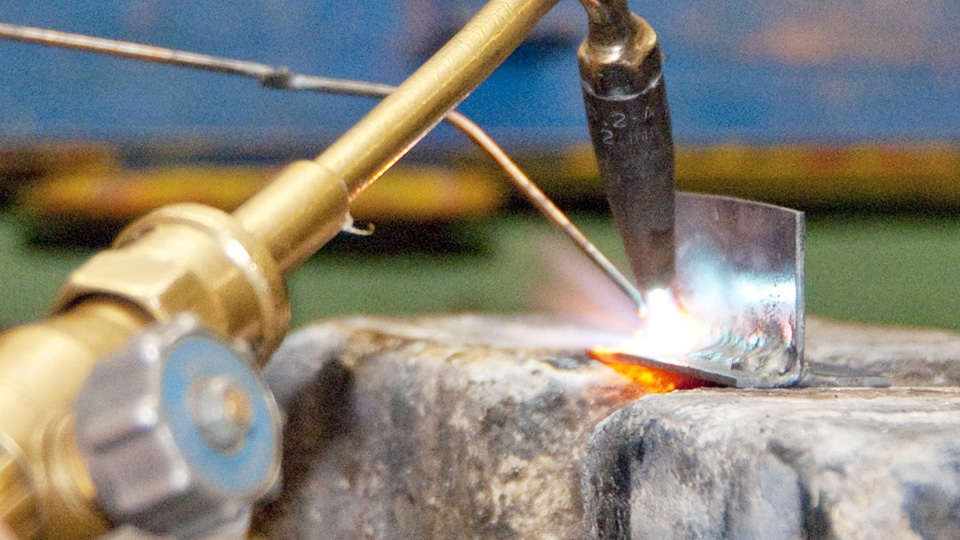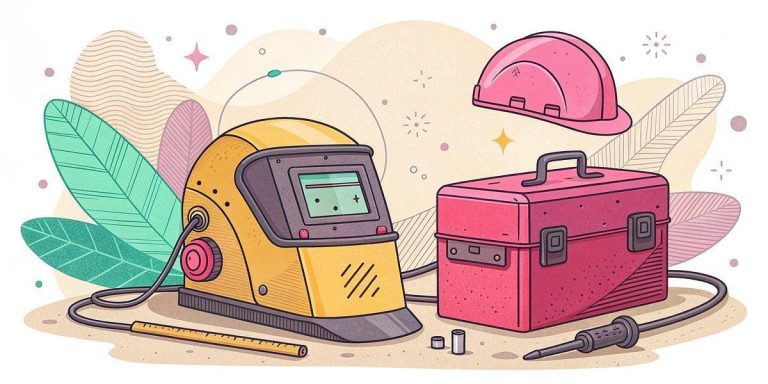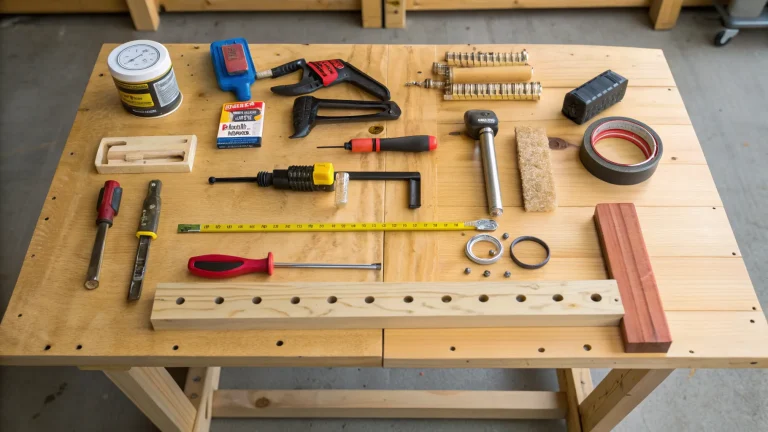If you’re firing up a torch for gas welding, you’ve probably noticed that the flame you’re working with can make or break your weld. Understanding the types of gas welding flames and their applications is key to laying down strong, clean beads, whether you’re a DIYer fixing a trailer, a hobbyist crafting art, a pro on a job site, or a student learning the craft.
I’ve spent years in shops tweaking torch settings and wrestling with acetylene, so let’s dive into the three main flame types—neutral, carburizing, and oxidizing—and how to use them right. A good flame isn’t just about heat; it’s about safety, weld quality, and matching the job to the metal.

Image by mechanicalgiants
Why Gas Welding Flames Matter
Gas welding, usually with oxy-acetylene, is all about controlling the flame to get the right heat and chemistry for your weld. The wrong flame can weaken your weld, burn through thin metal, or leave it brittle. I’ve seen a rookie ruin a perfectly good aluminum piece with an oxidizing flame when a neutral one would’ve done the trick.
The flame type affects weld integrity, material compatibility, and even your gas bill. Whether you’re joining steel pipes or brazing copper, picking the right flame ensures strong welds, saves time, and keeps you safe from toxic fumes or blowouts.
What Is Gas Welding?
Gas welding uses a flame from a mix of fuel gas (usually acetylene) and oxygen to melt and join metals. The torch mixes the gases, and you adjust the flame by tweaking the oxygen-to-fuel ratio. The flame’s characteristics—its color, shape, and heat—depend on this ratio, which defines whether it’s neutral, carburizing, or oxidizing.
Each flame has a specific job, from welding steel to brazing brass. I’ve used gas welding for everything from fixing farm equipment to crafting custom motorcycle parts—it’s versatile but demands finesse.
How Gas Welding Works
You light the torch with acetylene, then add oxygen to shape the flame. The flame has zones: the inner cone (hottest part), the outer envelope, and sometimes a feather (in carburizing flames). The inner cone’s temperature can hit 5,800°F with oxy-acetylene, hot enough to melt most metals. You hold the torch at a 45-degree angle, heat the joint, and feed a filler rod to create the weld pool. Sounds simple, but the flame type changes everything.
Safety First
Gas welding involves open flames and high-pressure gas, so safety is non-negotiable. Wear flame-resistant gloves, a welding helmet with a proper shade (like #5 for oxy-acetylene), and a leather apron. Keep your workspace clear of flammable materials—I once saw a shop fire start from a stray rag near a torch. Check for gas leaks with soapy water, and never store acetylene tanks on their side; it can mess with the acetone stabilizer inside.
The Three Types of Gas Welding Flames
Let’s get into the meat of it: the three flame types. Each has a unique oxygen-to-fuel ratio, appearance, and purpose. I’ll walk you through what they are, how to set them, and when to use them.
Neutral Flame
A neutral flame has a balanced oxygen-to-acetylene ratio (about 1:1). It’s the most versatile flame, producing a clean, hot burn without adding or removing carbon from the weld.
How to Set a Neutral Flame
Start with a low oxygen flow and full acetylene—your flame will be yellow and smoky. Slowly open the oxygen valve until the flame forms a sharp, blue inner cone with a faint outer envelope. The inner cone should be well-defined, about 1/8 to 1/4 inch long for most torches. I’ve spent hours tweaking my Victor torch to get this just right; too much oxygen, and you’re oxidizing, too little, and you’re carburizing.
When to Use a Neutral Flame
This is your go-to for most welding jobs—steel, stainless, cast iron, you name it. It’s clean, doesn’t alter the metal’s chemistry, and minimizes oxidation. I’ve used neutral flames for everything from welding 1/4-inch steel plates to repairing a cracked engine block. It’s also great for beginners because it’s forgiving and produces strong, ductile welds.
Practical Tips for Neutral Flames
Torch Angle: Hold the torch at 45 degrees and keep the inner cone 1/16 inch from the metal to avoid overheating.
Filler Rod: Use a rod matched to your base metal, like RG45 for mild steel. Dip the rod into the weld pool steadily to avoid porosity.
Common Mistake: Letting the flame drift. If the cone touches the metal, you’ll burn through. Keep it steady, like you’re painting with a brush.
Settings: For a standard 1/8-inch tip, set acetylene at 5-7 psi and oxygen at 5-7 psi. Adjust based on material thickness.
Pros and Cons of Neutral Flame
| Pros | Cons |
|---|---|
| Clean, strong welds | Requires precise adjustment |
| Works on most metals | Less effective for brazing |
| Minimal oxidation | Can be too hot for thin metals |
| Beginner-friendly | Slower for cutting |
Carburizing Flame
A carburizing (or reducing) flame has more acetylene than oxygen, creating a carbon-rich environment. It’s cooler than a neutral flame and has a distinct “feather” around the inner cone.
How to Set a Carburizing Flame
Light the torch with acetylene, then add oxygen until you get a neutral flame. Now, reduce the oxygen slightly until a soft, feathery edge appears around the inner cone. The flame will look bluish with a longer, less defined cone. I’ve dialed this in for brazing jobs, and it takes practice to avoid going too rich.
When to Use a Carburizing Flame
Use this flame for metals sensitive to oxidation, like aluminum, or for brazing and hard-facing. The extra carbon helps prevent oxide formation, and the cooler temperature (around 5,400°F) is gentler on delicate materials. I’ve used carburizing flames to braze copper fittings for plumbing—clean and strong every time.
Practical Tips for Carburizing Flames
- Joint Prep: Clean aluminum or copper thoroughly with a wire brush to remove oxides before welding.
- Filler Rod: For brazing, use a flux-coated bronze rod. For aluminum, try a 4043 rod with flux.
- Common Mistake: Too much acetylene. A sooty flame deposits carbon, weakening the weld. Keep the feather subtle.
- Settings: Set acetylene at 7-10 psi and oxygen at 3-5 psi for a 1/8-inch tip. Tweak for thinner materials.
Pros and Cons of Carburizing Flame
| Pros | Cons |
|---|---|
| Great for aluminum, brazing | Can deposit carbon if too rich |
| Prevents oxidation | Weaker welds on steel |
| Cooler for thin metals | Harder to control |
| Ideal for hard-facing | Not for cutting |
Oxidizing Flame
An oxidizing flame has more oxygen than acetylene, creating a hot, oxygen-rich burn. It’s the hottest of the three, reaching up to 6,300°F, but it’s tricky to use.
How to Set an Oxidizing Flame
Start with a neutral flame, then increase the oxygen until the inner cone shortens and becomes sharp and hissy. The flame will look pale blue with a tight, intense cone. I’ve set this for cutting but rarely for welding—it’s a last resort.
When to Use an Oxidizing Flame
This flame is mainly for cutting, not welding, because the excess oxygen can embrittle the weld. It’s used for specific alloys like brass or bronze, where a hot, clean burn is needed. I’ve used it to weld brass fittings, but only when a neutral flame wasn’t cutting it.
Practical Tips for Oxidizing Flames
- Torch Angle: Keep the cone farther from the metal (1/8 inch) to avoid burning through.
- Filler Rod: Use a brass rod with flux for brass welding. Avoid on steel—it’ll crack.
- Common Mistake: Over-oxidizing. Too much oxygen causes porosity and weak welds. Dial it back if the flame hisses too much.
- Settings: Acetylene at 5 psi, oxygen at 10-12 psi for a 1/8-inch tip. Adjust for cutting vs. welding.
Pros and Cons of Oxidizing Flame
| Pros | Cons |
|---|---|
| Hottest for cutting | Weakens most welds |
| Good for brass, bronze | Causes oxidation, porosity |
| Fast for thick materials | Hard to control |
| Clean burn | Not for beginners |
Step-by-Step Guide to Setting Your Flame
Here’s how I set up my oxy-acetylene torch for welding, whether I’m aiming for neutral, carburizing, or oxidizing:
- Check Equipment: Inspect hoses, regulators, and torch for leaks. Use soapy water on connections—bubbles mean trouble.
- Set Pressures: For a 1/8-inch tip, start with 5-7 psi acetylene and 5-7 psi oxygen. Adjust for flame type later.
- Light the Torch: Open the acetylene valve slightly and light with a striker (never a lighter). You’ll get a yellow, smoky flame.
- Adjust to Neutral: Slowly open the oxygen valve until the flame forms a sharp blue inner cone. This is your neutral flame.
- Tweak for Carburizing: Reduce oxygen slightly for a feathery edge if welding aluminum or brazing.
- Tweak for Oxidizing: Increase oxygen for a tight, hissy cone if cutting or welding brass.
- Test on Scrap: Practice on a scrap piece to ensure the flame’s right for your material. I always test before hitting the real job.
- Weld: Hold the torch at 45 degrees, heat the joint to form a pool, and feed the filler rod smoothly.
Choosing the Right Flame for Your Project
Picking the right flame depends on your material, joint, and job. Here’s how I approach it:
Scenario 1: Welding Mild Steel
You’re joining 1/8-inch steel plates for a gate. A neutral flame is perfect—clean, strong, and no fuss. Use an RG45 rod, keep the torch steady, and weld with a slight weaving motion. I’ve built countless gates this way, and they hold up for years.
Scenario 2: Brazing Copper Pipes
You’re brazing copper fittings for a plumbing job. A carburizing flame keeps oxides at bay and gives a smooth joint. Use a flux-coated bronze rod and heat the fitting, not the rod, to let the filler flow. I learned this the hard way after burning through a pipe—heat control is key.
Scenario 3: Cutting Thick Steel
You need to cut a 1/2-inch steel plate. An oxidizing flame is your best bet—hot and fast. Switch to a cutting tip, increase oxygen pressure, and use a steady hand. I’ve cut scrap yard steel like this for custom projects; it’s satisfying but messy.
Factors to Consider
- Material: Steel loves neutral; aluminum and copper need carburizing; brass might need oxidizing.
- Joint Type: Butt welds are easiest for neutral flames. Fillet welds work with carburizing for brazing.
- Thickness: Thin metals (under 1/8 inch) need cooler flames (carburizing). Thick metals can handle neutral or oxidizing.
- Code Requirements: AWS D17.1 for aerospace or ASME B31.3 for piping may specify flame types. Check your specs.
- Budget: Neutral flames use less gas, saving money. Oxidizing flames burn more oxygen.
Practical Know-How for Welders
Here’s what I’ve learned from years of gas welding:
Joint Prep
- Cleanliness: Remove rust, paint, or oil with a wire brush or grinder. Dirty joints cause porosity. I’ve had to re-weld joints because I skipped this—don’t.
- Fit-Up: Ensure tight joint fit-up for better fusion. Gaps over 1/16 inch need more filler and skill.
- Beveling: For thick metals (over 1/4 inch), bevel edges to 30 degrees for deeper penetration.
Machine Settings
- Torch Tip: Use a #0 or #1 tip for thin metals, #2 or #3 for thicker. I keep a range of Victor tips handy.
- Pressure: Start with 5-7 psi for both gases on a #1 tip. Increase oxygen for oxidizing, decrease for carburizing.
- Gas Flow: Too much gas wastes fuel; too little starves the flame. Adjust until the flame is stable.
Common Mistakes and Fixes
- Mistake: Wrong flame type. Using an oxidizing flame on steel causes cracks. Fix: Always test on scrap first.
- Mistake: Poor torch control. Moving too fast leaves weak welds; too slow burns through. Fix: Practice a steady rhythm.
- Mistake: Ignoring safety. No gloves or wrong shade lens can lead to burns or eye damage. Fix: Gear up properly every time.
Industry Standards and Compliance
In the USA, gas welding often follows AWS D17.1 for aerospace or ASME B31.3 for piping. These codes specify filler rods, flame types, and inspection requirements. For example, ASME requires neutral flames for most steel welds to avoid carbon contamination. Always check your project’s code to avoid costly rework. I’ve had to redo a piping job because we used a carburizing flame when neutral was specified—lesson learned.
Conclusion
You’re now ready to master the types of gas welding flames and their applications. Neutral flames are your all-purpose workhorse for clean, strong welds on steel and more. Carburizing flames are perfect for aluminum, brazing, or hard-facing, keeping oxides at bay. Oxidizing flames are hot and fast for cutting or specific alloys like brass, but use them sparingly for welding. By matching the flame to your material, prepping joints properly, and dialing in your torch, you’ll produce welds that are strong, safe, and code-compliant.
FAQ
What’s the best flame for welding mild steel?
A neutral flame is best for mild steel. It provides clean, strong welds without adding carbon or causing oxidation. Use an RG45 filler rod and keep the inner cone just off the metal for best results.
Can I use a carburizing flame for all metals?
No, carburizing flames are best for aluminum, copper, or brazing. They’re too carbon-rich for steel, causing brittle welds, and too cool for thick materials. Stick to neutral for most metals.
Why does my weld have porosity?
Porosity often comes from dirty joints, wrong flame settings, or too much gas flow. Clean the metal thoroughly, use a neutral or carburizing flame as needed, and adjust gas pressures to 5-7 psi for a #1 tip.
Is an oxidizing flame good for welding?
Rarely. Oxidizing flames are too hot and oxygen-rich for most welding, causing porosity or embrittlement. Use them for cutting or specific alloys like brass, but stick to neutral or carburizing for welding.
How do I know if my flame is set correctly?
Test it on scrap metal. A neutral flame has a sharp blue cone, carburizing has a feathery edge, and oxidizing is tight and hissy. Practice adjusting oxygen and acetylene to get the right look and weld quality.



